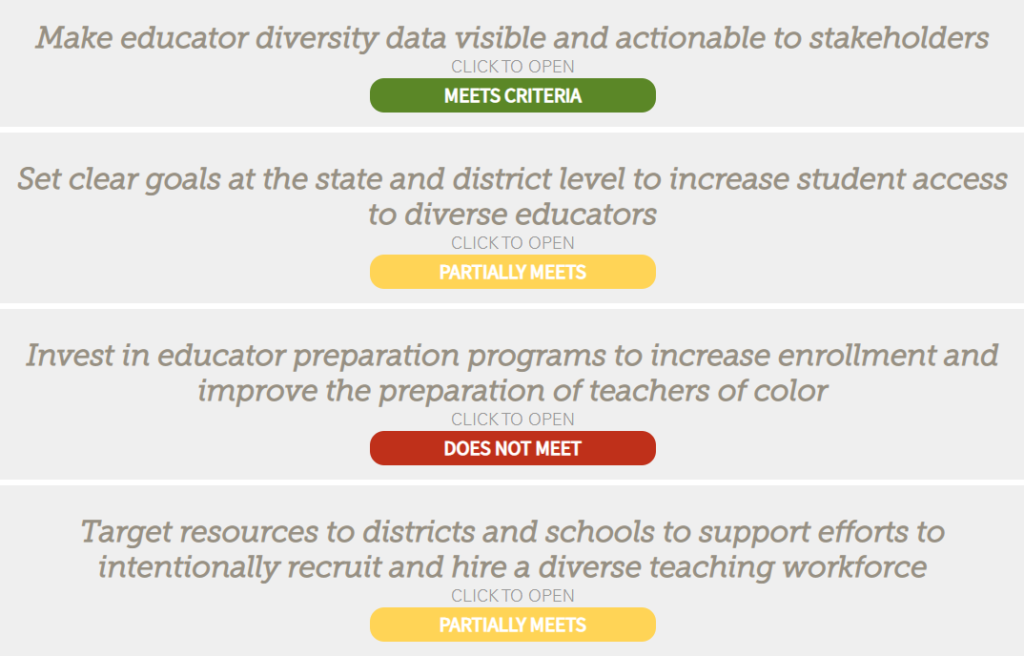
Just as doctors-in-training spend intensive, immersive time training as a hospital resident; some of our future teachers are trading in shorter stints in schools for a full year inside a classroom, serving as co-teachers alongside veteran educators while receiving a paid stipend. While institutions like Wilmington University and RELAY Graduate School of Education adopted a residency approach several years ago, new ones just emerged at University of Delaware and Delaware State University.
It marks a growing trend in Delaware and nationwide, as residency models offer glimmers of hope for improving teacher retention and diversity. In 2019, Delaware invested $1 million to double the number of yearlong residencies in Delaware.
Rodel is proud to be collaborating with two of our largest districts, Colonial and Red Clay, as well as our institutes of higher education, and the Michael and Susan Dell Foundation—on a years-long project that will diversify our teaching workforce, and retain more qualified teachers. We’re excited to convene local and national partners, while bringing our project management and research support to the table. By leaning into the residency model, and focusing on recruiting and retaining new teachers, we are working to build a more sustainable system that supports kids.
Among the project goals is increasing the number of teacher residents statewide from 42 to 75 by 2023 and within Red Clay and Colonial from a combined 28 teacher residents currently to a combined 41.
Our progress is commendable, but advocates will now turn their attention to the new state legislature to codify its commitment to yearlong teacher residencies, and make sure funding is sustainable.
If all goes well, this commitment could lead to wider growth of residency programs and a robust (and diverse) pipeline of talented teachers who stick around in our schools. They’re not a silver bullet that will “solve” teacher diversity and retention in Delaware, but they can certainly help.
What are teacher residencies? The Every Student Succeeds Act (ESSA) contains the technical definition, but a teacher residency is considered an “alternative route” to teaching because it differs from the traditional, undergraduate approach of a teacher preparation program (though often it is embedded within these types of programs).
Typically, an aspiring teacher looking to enter a residency program must apply and be accepted. Once they are accepted, a resident then works as an apprentice for one year in a classroom with an expert teacher while simultaneously engaging in coursework at an affiliated college or university. Some residents receive a stipend and a scholarship during their apprenticeship year in exchange for their commitment to teach in the same district for a few years beyond the year of apprenticeship.
Teacher resident programs typically focus on high-need content or hiring areas in a high-need school. In Delaware, this includes areas like: middle school and high school math, middle school and high school science, foreign language, secondary special education, and bilingual/ESOL programs.
Why are they important? Teacher residency programs look to address a multitude of problems that exist in the teaching profession. States across the country face teacher shortages, high turnover rates, and many struggle to recruit and retrain teachers of color. This can negatively impact students. As a Learning Policy Institute report points out, “at many schools—especially those serving the most vulnerable populations—students often face a revolving door of teachers over the course of their school careers.”
These problems ring true in Delaware. Local districts primarily recruit from local universities – most prominently from University of Delaware and Wilmington University. Since 2010, however, enrollment in traditional teacher preparation programs has decreased, making the applicant pool smaller each year.
Delaware also struggles to recruit and retain educators of color. Teachers and school leaders in Delaware are overwhelming white while nearly half of the student population are students of color. As of the 2017-18 school year, less than 15 percent of teachers in Delaware were non-white. As of 2018, only about 27 percent of students enrolled in Delaware education preparation programs were students of color. And only about 50 percent of teachers of color are in the same school after two years.
A 2016 News Journal reported that Delaware schools saw a teacher turnover rate (the rate at which teachers leave their school) of about 15 percent, but the number was higher in high-needs schools. A 2015 report produced by Harvard’s Strategic Data Project for the Delaware Department of Education also noted this trend, stating that year-to-year, the rate of teacher turnover in Delaware is higher in high-poverty schools.
What are the benefits? Teacher residency programs “create a vehicle to recruit teachers for high-needs fields and locations; offer recruits strong content and clinical preparation specifically for the kinds of schools in which they will teach; connect new teachers to early career mentoring that will keep them in the profession; and provide financial incentives that will keep teachers in the districts that have invested in them.”
Some consider residency models the gold standard for teacher prep models, as they often lead to “higher retention of teachers in the field, greater demographic diversity among teachers prepared through residency programs, and the potential to increase student achievement.”
Experts found that teacher residency programs: (1) provide a consistent pipeline of new teachers, (2) recruit more diverse candidates, (3) meet student and district needs by reducing turnover and filling shortages, (4) provide value to school communities and classrooms. The National Center for Teacher Residencies (NCTR)—whose network of teachers-in-training are placed throughout the country—reported that when surveying partners in their network:
- 91% of hiring principals report that residency-trained teachers outperform typical new teachers
- 92% of residency-program graduates teach in Title I Schools
- 86% of graduates continue to teach in partner districts after three years
- 52% of residents in their residency programs identify as people of color
What’s next? Demand is clearly growing in Delaware for more residency programs. The Educator Support Team at DDOE recently released a Request for Applications to support yearlong teacher residencies from July 1, 2021 to June 30, 2022. Governor John Carney’s recommended FY22 budget once again includes $1 million for teacher residencies.
The NCTR is working with DSU to develop their residency programs. The College of Arts and Sciences and College of Human Development at University of Delaware held a conference last February on teacher residencies. As one of the youngest and most diverse legislatures in state history begins its work this month, teacher residencies will no doubt remain a priority.
If the General Assembly comes through and codifies this commitment through the legislative process, Delaware districts and institutes of higher education would gain confidence in the long-term sustainability of this program.




